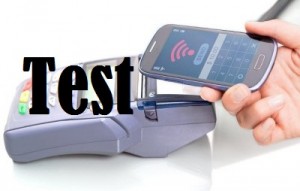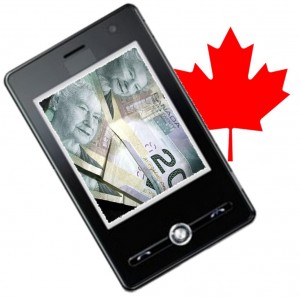Samsung tests Samsung Pay in South Korea
Samsung begun testing its new mobile payments platform in South Korea. Called Samsung Pay, the platform aims to become one of the most effective ways for consumers to make mobile payments, competing with other services from companies like Apple and Google. The platform has already generate some degree of hype, and Samsung has tentative plans to release it at some point later in the year, but has yet to announce an official launch date.
Samsung Pay to use magnetic secure transmission to make mobile payments accessible
Samsung Pay works in a similar fashion to other mobile payments platforms, leveraging NFC technology and biometrics in order to authenticate a mobile transaction. The biometrics that the platform uses, which is a fingerprint scanner, will make transactions secure, effectively protection consumer financial information as they use Samsung Pay to purchase products. The platform also makes use of magnetic secure transmission, which is a similar to the magnetic strips that are associated with traditional credit cards.
NFC technology has yet to see widespread adoption among retailers
 NFC technology is one of the staples of mobile payments, but relatively few retailers have yet to embrace the technology. There are few NFC-enabled point-of-sale systems, which has limited the growth of mobile payments in physical stores. This is why Samsung Pay’s magnetic secure transmission may be a boon, as it will allow the platform to work with conventional point-of-sale systems in order to make mobile payments possible.
NFC technology is one of the staples of mobile payments, but relatively few retailers have yet to embrace the technology. There are few NFC-enabled point-of-sale systems, which has limited the growth of mobile payments in physical stores. This is why Samsung Pay’s magnetic secure transmission may be a boon, as it will allow the platform to work with conventional point-of-sale systems in order to make mobile payments possible.
Competition in the mobile payments field continues to grow as companies enter into the space
Samsung will be facing harsh competition in the mobile payments space, much of which will come from Apple. Google also plans to launch its own mobile payments platform. This competition will give consumers plenty of options when it comes to mobile payments, but companies may find it difficult to keep the attention of consumers for long. Many consumers have yet to show loyalty to a singular platform, favoring the ability to jump from one platform to another in order to find the most benefit.
Despite the fact that people residing in Canada are slow to accept the tech, banks are still diving in.
In Canada, the major banks are working hard to implement the technology that is required to allow consumers to be able to adopt mobile payments, but at the same time, less than a quarter of the adults in the country can actually use it.
A recent whitepaper has stated that the largest six banks in the country are pouring their efforts into a small market.
The banks are highly enthusiastic about creating mobile payments apps and services that will allow people to use their smartphones instead of debit and credit cards when they make a purchase in a store. That said, the whitepaper pointed out that only under 25 percent of consumers in Canada actually have all of the requirements that are needed to actually use that technology.
This implies that Canadian banks are moving ahead with mobile payments much more quickly than consumers can actually keep up.
 Financial institutions in the country consider mobile wallets that will be used for smaller purchases – particularly when it comes to those developed through the use of NFC technology – to be a key component of their development over coming years. They believe that this will be integral to being able to satisfy what they think is a powerful consumer demand. They also feel that it is vital to take on a technologically-forward position, said the whitepaper, which was created in conjunction with the big six banks in Canada.
Financial institutions in the country consider mobile wallets that will be used for smaller purchases – particularly when it comes to those developed through the use of NFC technology – to be a key component of their development over coming years. They believe that this will be integral to being able to satisfy what they think is a powerful consumer demand. They also feel that it is vital to take on a technologically-forward position, said the whitepaper, which was created in conjunction with the big six banks in Canada.
Some of the large banks view the creation of their own mobile wallet app as a vital component in defending themselves against the intrusion of technology giants such as Google and Apple, which are already moving into this space as financial players. They are hoping to be able to establish themselves as the natural choice for consumers, early on, before the technology giants have the opportunity to sink their claws into this marketplace and draw consumers away from the banks.
So far, services such Google Wallet and Apple Pay have been launching in a slowly growing number of countries, with the iOS version being seen as the primary threat. Apple’s mobile payments platform has already launched in the United States and it has just stepped into the United Kingdom. Many feel that it will make its way into Canada before the end of the year.
 NFC technology is one of the staples of mobile payments, but relatively few retailers have yet to embrace the technology. There are few NFC-enabled point-of-sale systems, which has limited the growth of mobile payments in physical stores. This is why Samsung Pay’s magnetic secure transmission may be a boon, as it will allow the platform to work with conventional point-of-sale systems in order to make mobile payments possible.
NFC technology is one of the staples of mobile payments, but relatively few retailers have yet to embrace the technology. There are few NFC-enabled point-of-sale systems, which has limited the growth of mobile payments in physical stores. This is why Samsung Pay’s magnetic secure transmission may be a boon, as it will allow the platform to work with conventional point-of-sale systems in order to make mobile payments possible.
 Financial institutions in the country consider mobile wallets that will be used for smaller purchases – particularly when it comes to those developed through the use of
Financial institutions in the country consider mobile wallets that will be used for smaller purchases – particularly when it comes to those developed through the use of 